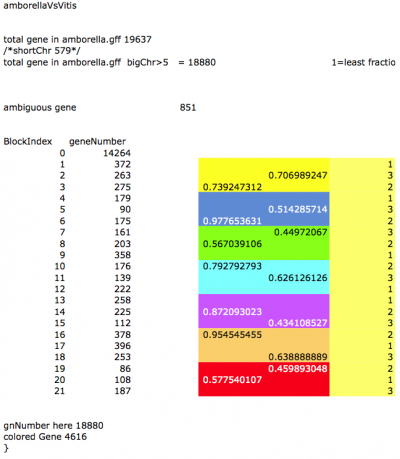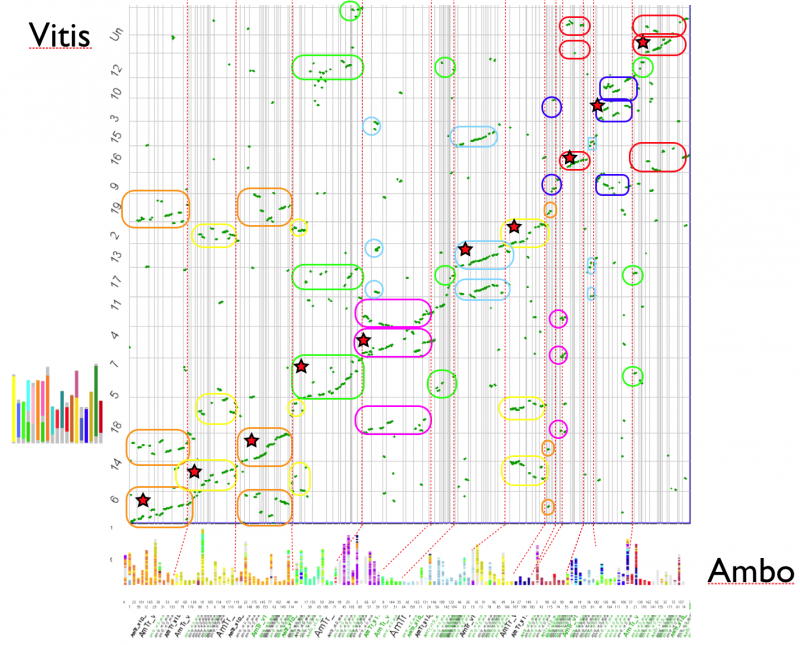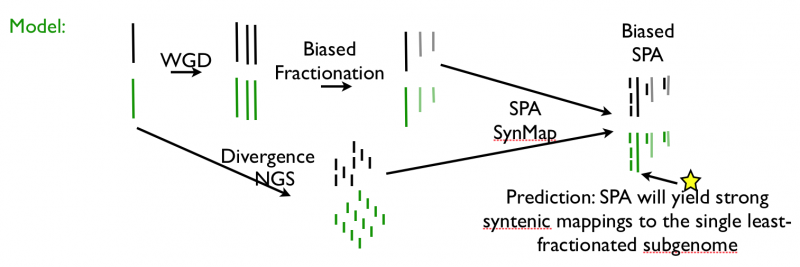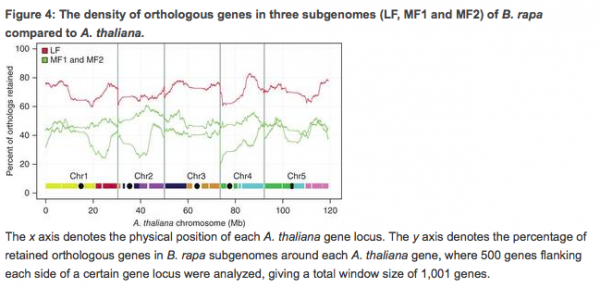Angisperm ancestral genome reconstruction
Collaboration of:
- Chunfang Zheng
- David Sankoff
- Haibao Tang
- Eric Lyons
Overview
Zheng and Sankoff have developed and continue to refine a mathematical framework for reconstructing ancestral genome states of various angiosperm lineages using syntenic blocks identified by SynMap, an interactive tool for the pairwise comparison of whole genomes development by Tang and Lyons. This problem is complicated by whole genome duplications, a common occurrence in angiosperm lineages, followed by fractionation of duplicated gene content.
Of particular interest are the ancestral genomes of:
- Eudicots which have undergone a paleohexaploidy
- Monocots
- Not possible to solve with the current taxonomic sampling of monocot genomes (currently, only grass genomes are available and of sufficient quality)
- Anticipated high-quality genomes that may help:
- Banana: http://www.musagenomics.org/
- Duckweed: http://lemna.rutgers.edu/
- Angiosperms
- Of current research interest by this team
Results
Warning: The results published here do not constitute a peer-reviewed publication. These results are a combination of work-in-progress, research notes, and various hypotheses. As such, please do not republish them, reference them, or use them as a basis for truth. However, please feel free to contact any of the researchers involved with this project if you have any questions or would like to discuss any ideas. Most of them are friendly.
Mapping the seven hypothesized ancestral chromosomes of the pre-hexaploid onto the genome of Vitis vinifera


Mapping Amborella contings to eudicot genomes
- Colored by ancestral pre-hexaploid chromosomes and degree of fractionation
- Ordered by SynMap's syntenic path assembly algorithm
Amborella to peach

Amborella to cacao

Amborella to vitis

Overlaying ancestral chromosomes and syntenic dotplots
Amborella to cacao

Amborella to vitis

Fractionation anomaly

The syntenic path assembly algorithm orders contigs by:
- Determining the chromosome to which maps best based on highest the highest scoring syntenic block
- Placing them starting with the contig that maps closest to the end of the chromosome (end determined by how the data is stored)
- Orienting them based on whether the syntenic block maps in the positive or negative direction
As such, if there is a strong biased fractionation effect, then most of the contigs should map to the least fractionated syntenic region. Previous work on duplicated angiosperm genomes have shown that there is a consistent and genome-wide effect of biased fractionation:
- Following tetraploidy in an Arabidopsis ancestor, genes were removed preferentially from one homeolog leaving clusters enriched in dose-sensitive genes
- Differentiation of the maize subgenomes by genome dominance and both ancient and ongoing gene loss
- A model for biased fractionation after whole genome duplication]
Of particular interest is the genome of Brassica rapa, which had a hexaploidy event much like the eudicots and shows a consistent genome-wide bias in fractionation:
